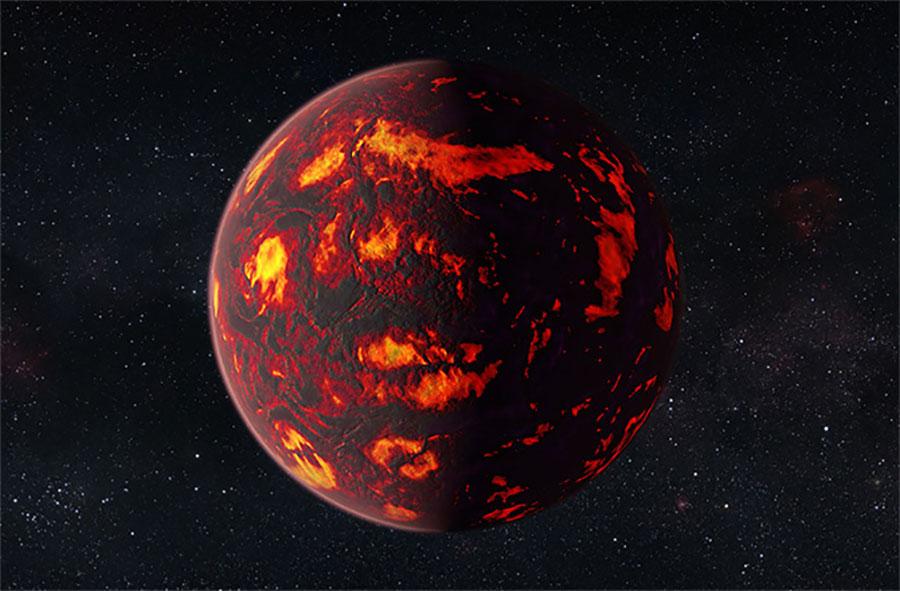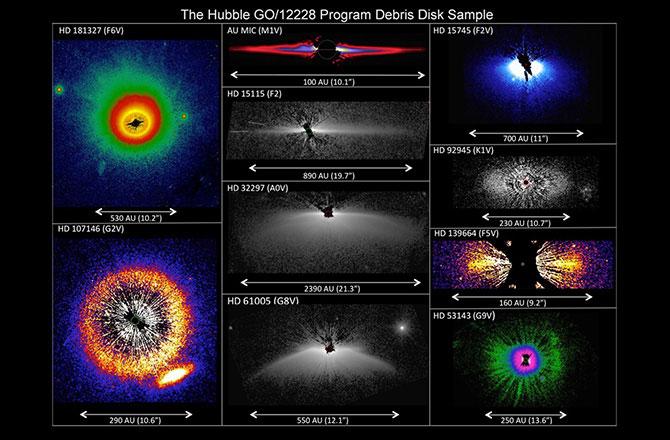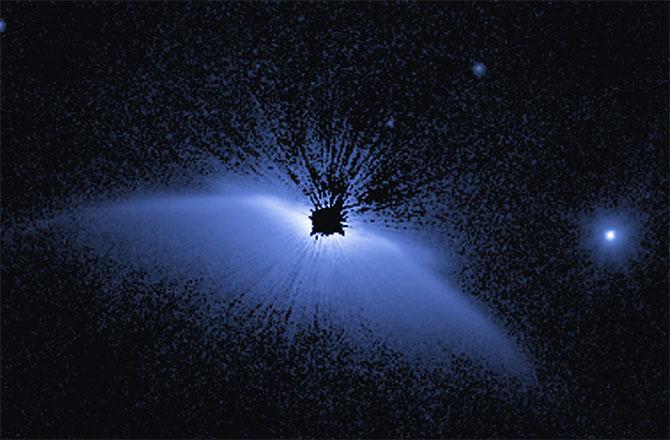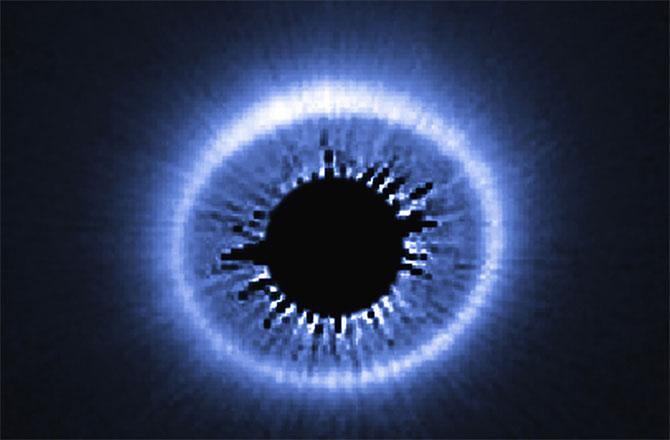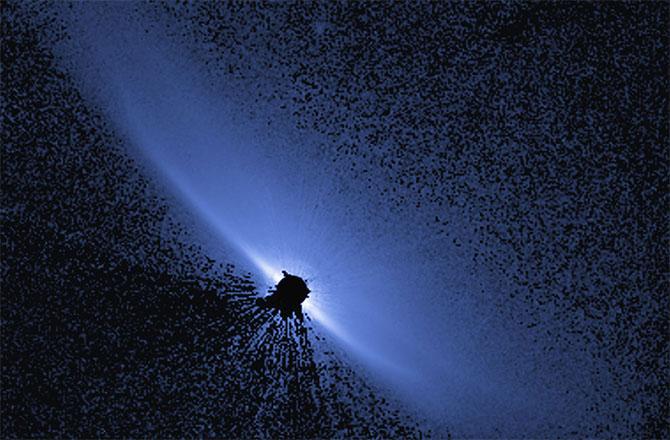Hubble studies atmosphere of distant and hot Super Earth
Scientists have analyzed the atmosphere of a super Earth planet for the first time using the Hubble Space Telescope. The planet that Hubble has been studying is called 55 Cancri e and it orbits very close to its parent star. That close orbit gives the planet surface temperatures of up to 3,600F and eliminates the chance of life on the planet.
Hubble has discovered that the atmosphere of the planet is mostly hydrogen and helium, similar to the atmosphere of a gas giant planet. Smaller planets tend to lose those elements in their atmosphere because gravity is low and the hydrogen and helium escape into space because they are so light. Gas giants are able to hold these light elements due to their stronger gravity.
On smaller worlds, the light atmosphere is typically replaced with a secondary atmosphere, which is what happened on Earth. 55 Cancri e is the only known super-Earth that has such a high surface temperature. Astronomers though it would lose most of its atmosphere thanks to intense radiation from the parent star. Exactly how it was able to keep its helium and hydrogen atmosphere is poorly understood at this time.
55 Cancri e is orbiting a sun-like star about 40 light-years away from Earth. The scientists on the project had to develop a method to extract viable signal from the data Hubble collected because the star is so bright the scan speed had to be much faster than normal. In the end, the team was able to extract a signal strong enough to detect the elements in the planet's atmosphere. Scientists expect that there may be hydrogen cyanide in the atmosphere of the planet as well, but that observation can't be confirmed until the James Web Space Telescope is in use.
SOURCE: Discovery

